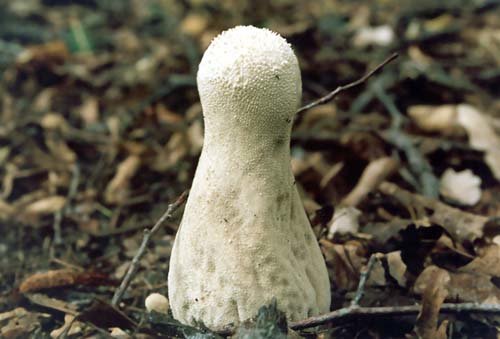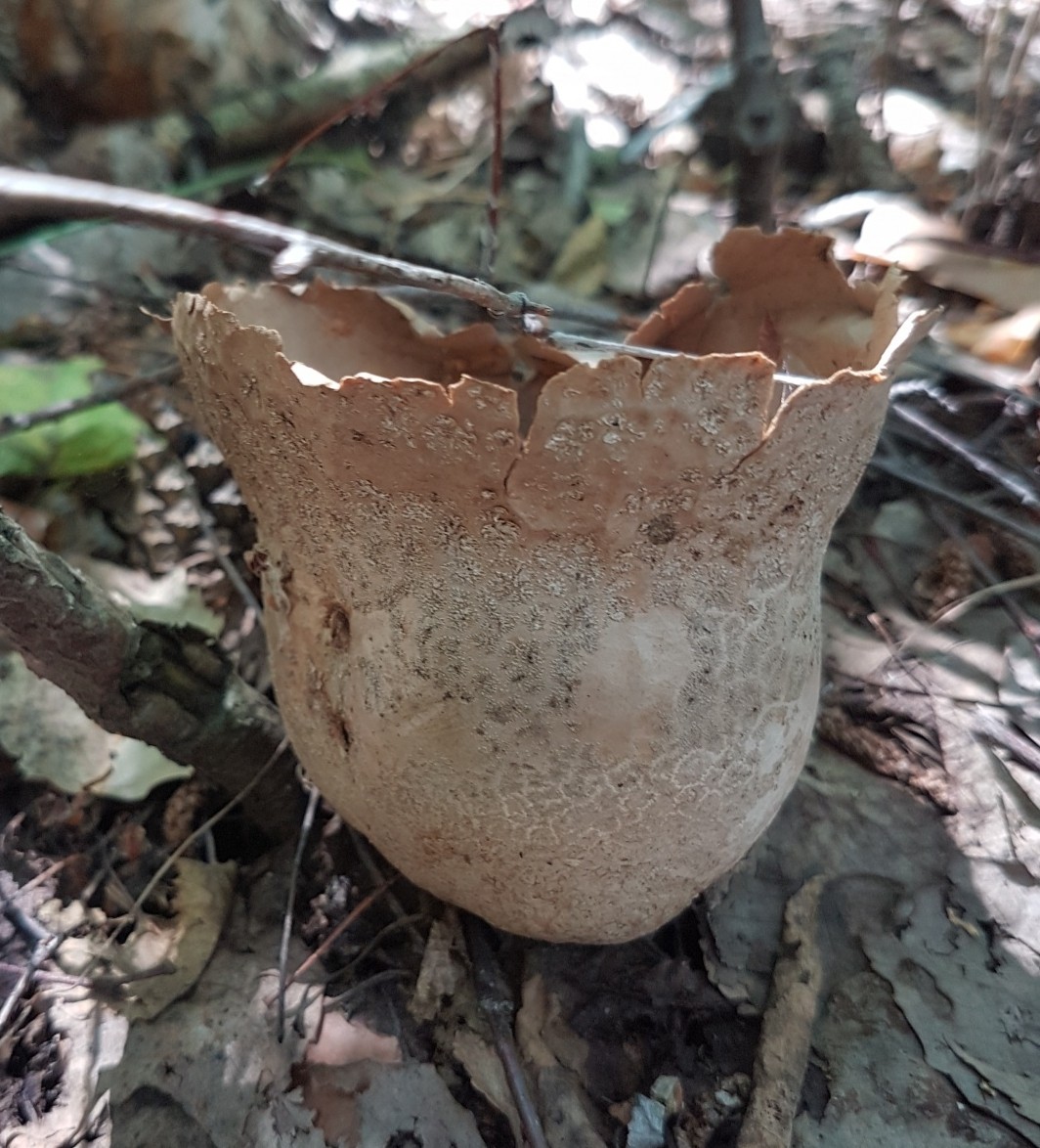Golovach oblong (Lycoperdon excipuliform)
- Dabeş: Basidiomycota (Basidiomycetes)
- Dabeşkirin: Agaricomycotina (Agaricomycetes)
- Çîn: Agaricomycetes (Agaricomycetes)
- Binçalak: Agaricomycetidae (Agaricomycetes)
- Rêzkirin: Agaricales (Agarîk an Lamellar)
- Malbat: Agaricaceae (Champignon)
- Cins: Lycoperdon (Raincoat)
- Awa: Lycoperdon excipuliforme (Elongated golovach)
- Raincoat elongated
- Marsupial head
- Golovach elongated
- Lycoperdon saccatum
- Scalpiform baldness

laşê fêkî:
Large, characteristic shape, resembling a mace or, less often, a skittle. A hemispherical apex rests on a long pseudopod. The height of the fruiting body is 7-15 cm (and more under favorable conditions), the thickness in the thinner part is 2-4 cm, in the thicker part – up to 7 cm. (The figures are very approximate, since various sources strongly contradict each other.) white when young, then darkens to tobacco brown. The fruit body is unevenly covered with spines of various sizes. The flesh is white when young, elastic, then, like all raincoats, turns yellow, becomes flabby, cottony, and then turns into a brown powder. In mature mushrooms, the upper part is usually completely destroyed, releasing spores, and the pseudopod can stand for a long time.
Toza Sporê:
Qehweyî.
Belavbûn:
It occurs in small groups and singly from the second half of summer to mid-autumn in forests of various types, in glades, edges.
Demsal:
Havîn payîz.
Given the large size and interesting shape of the fruiting body, it is quite difficult to confuse the golovach oblong with some kind of related species. However, short-legged specimens can be confused with large prickly puffballs (Lycoperdon perlatum), but by observing older specimens, you can catch a significant difference: these puffballs end their life in very different ways. In a prickly raincoat, spores are ejected from a hole in the upper part, and in an oblong golovach, as they say, “tears off its head”.
This is what Lycoperdon excipuliforme looks like after its head “exploded”:

While the flesh is white and elastic, the oblong golovach is quite edible – like the rest of the raincoats, golovachs, and flies. As with other puffballs, the fibrous stalk and hard exoperidium must be removed.









